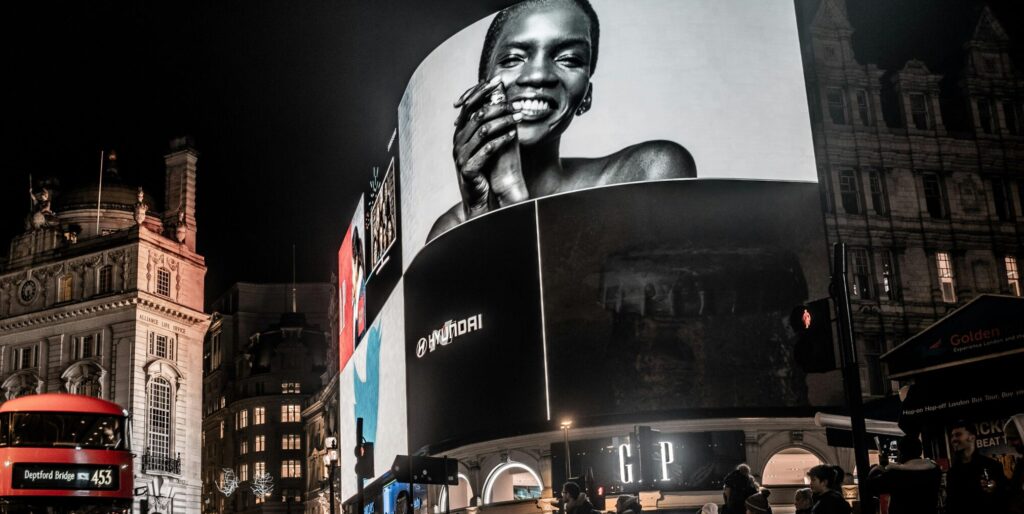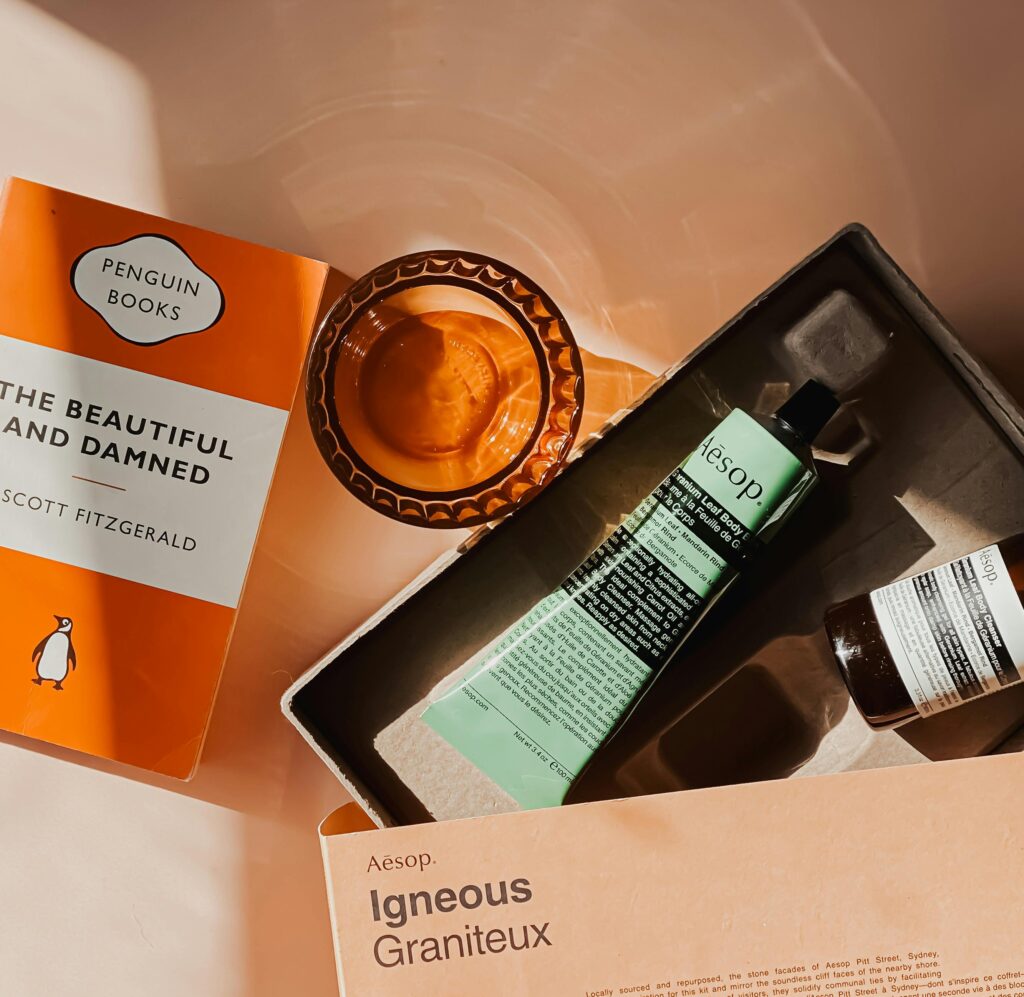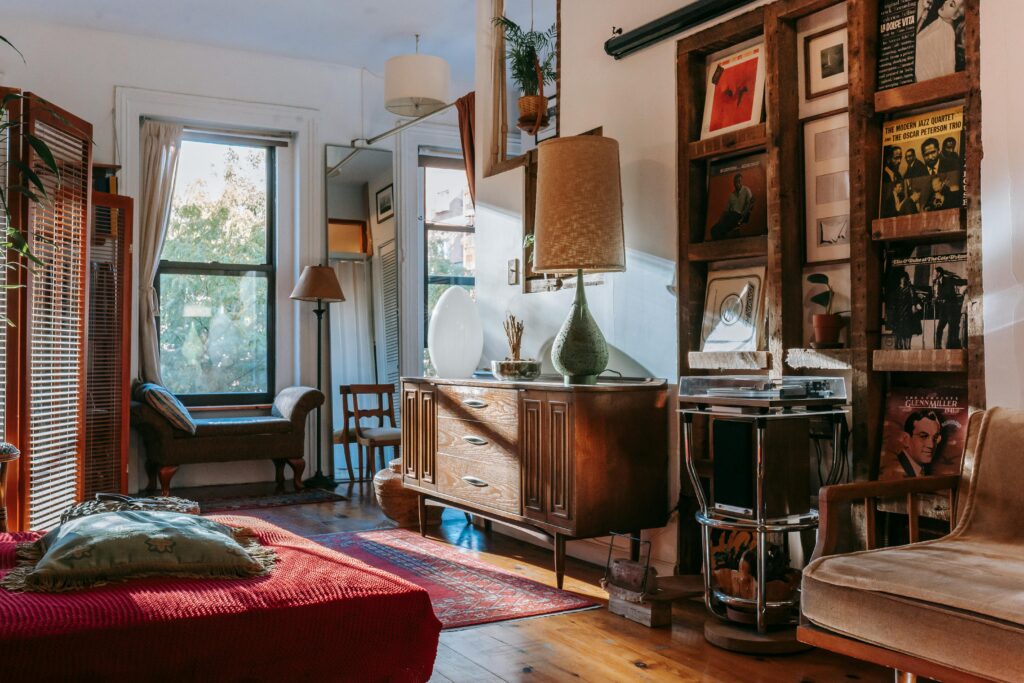In recent years, the advertising landscape has seen a significant shift, with global social media ad spending projected to grow by nearly 50% by 2029, reaching over $345 billion.
This surge in investment has led to increased competition and rising costs, with platforms like Meta (Facebook and Instagram) reporting average CPMs of $10.83 as of January 2025, up 24% compared to 2023.
As a result, advertisers are exploring alternative channels to get more from their media budgets and a better ROI.
Amidst these industry wide changes, Pinterest has rapidly been growing its Monthly Active Users (MAU) and its advertising offering, becoming a key platform for marketing teams to efficiently scale new customer acquisition.
WHY USE PINTEREST ADVERTISING?
Unlike other social platforms, Pinterest functions as a visual search engine, where users actively look for inspiration and products rather than passively scroll.
One of Pinterest’s biggest advantages is its high purchase intent audience, with 80% of weekly users discovering a new brand or product while browsing.
Pinterest ads reach consumers already in the decision-making phase, significantly increasing the likelihood of conversion.
Beyond efficiency, Pinterest provides access to affluent consumers, with the platform reaching 40% of U.S. households earning over $150,000 annually.
This makes it an ideal space for luxury, home, beauty, and lifestyle brands looking to connect with high-spending audiences.
Gone are the days when Pinterest was a small platform for users to browse recipes and room ideas; it’s now a platform of over 500 million users who are actively looking for products.
HOW MUCH DO PINTEREST ADS COST?
We’d love to give you a straight answer, but like all things in paid media, it depends.
Pinterest advertising is no different to Google Ads, Meta, and TikTok, costs vary based on audience, industry competition, and campaign objectives.
To get a gauge of how much each click will cost for your proposed campaign, you need to scope out:
- Cost Per Click (CPC)
- Cost Per Thousand Impressions (CPM)
- Budget
If you don’t have any prior data, you can lean on benchmarking data for engagement metrics. However, keep in mind that these are just benchmarks meant to provide guidance, so don’t be surprised if your actual results differ.
Create yourself a campaign and use the performance analysis section of the ad platform, found here:
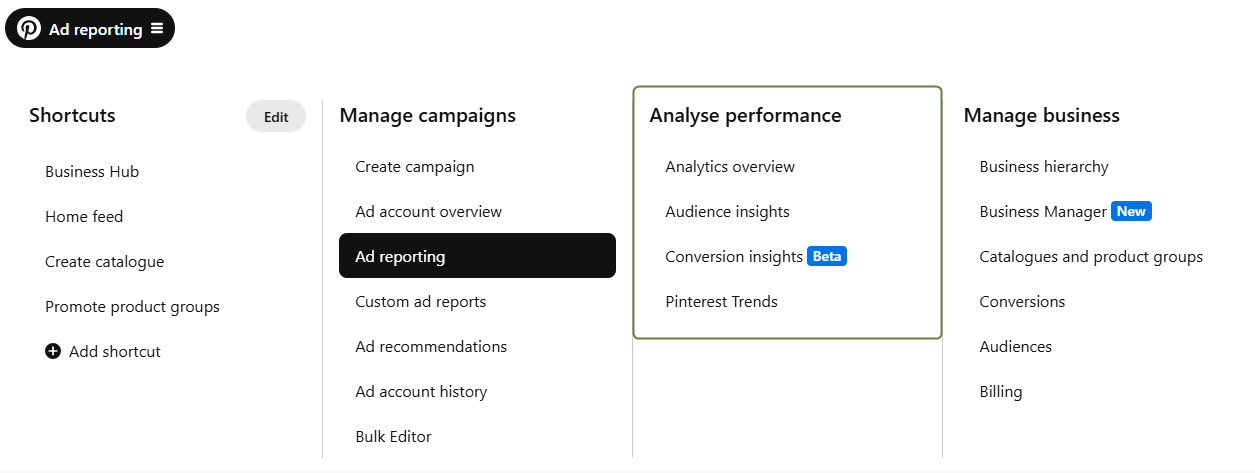
You’ll be able to get a grasp of how far your budget will go and the characteristics of each audience you want to target, assisting with making budgetary decisions, especially if this is a new platform you are exploring.
WHAT ARE THE BENEFITS OF PINTEREST ADVERTISING?
We could write a series of posts about the effectiveness of Pinterest ads, but for this article, the team has collated their top 10 benefits of advertising on Pinterest.
EXPANSIVE (AND GROWING) USER BASE
As of Q3 2024, Pinterest reported 537 million monthly active users worldwide, marking an 11% increase from the previous quarter:
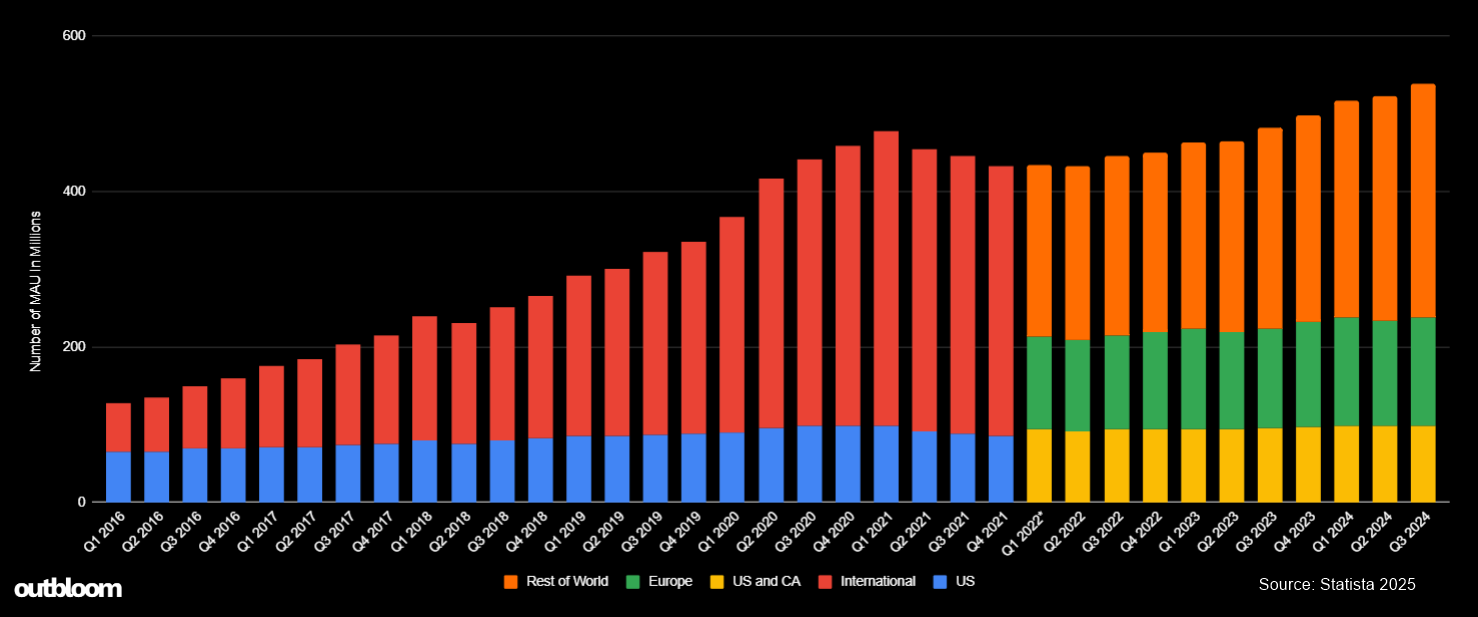
What makes this more impressive is the YoY audience growth compared against selected social media platforms:
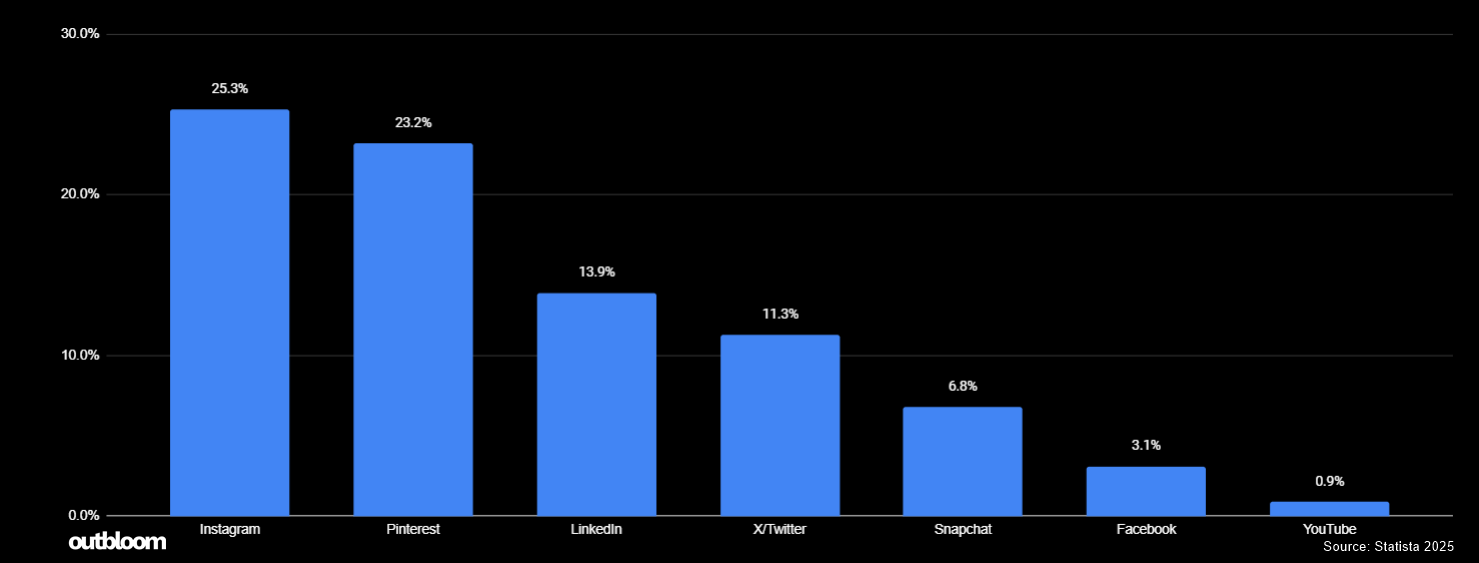
Since it was founded in 2009, this unique platform has been relatively low key in the shadow of Meta, IG and YouTube.
However, consistent year over year growth in user volume combined with shining user satisfaction ratings (73/100) has elevated this social media platform to be a top contender for demanding advertisers budgets.
HIGH-INCOME USER DEMOGRAPHIC
Studies show that one-third of Pinterest users earn over £80,000 per year, and 45% of users have a household income in the top 25% of earners.
This significantly surpasses the income demographics of other social platforms, where engagement can be passive and conversions harder to drive, dependent on the scenario.
When you couple this with the statistic that Pinterest boasts a 40% larger basket size than comparable social platforms, many brands are asking themselves why they didn’t invest sooner.
You’re probably wondering how or why Pinterest connects so well with affluent audiences, and it’s for a few reasons:
- Pinterest is often used as a planning tool, with users saving Pins related to fashion, interiors, travel, and high-end lifestyle products long before making a purchase.
- Unlike impulse-driven purchases on other social media, Pinterest cultivates a buying mindset, where consumers curate and refine their choices over time.
- It’s just different. Pinterest’s design facilitates product discovery and planning, leading users to make more significant purchases, it’s not a SERP full of retailers selling products nor is it a platform like Meta/IG where ads attempt to blend naturally into other content.
FEMALE DOMINATED AUDIENCE BASE
Pinterest is one of the most popular social media platforms in the UK with over 13 million users. Of these 13 million, 71% are female, 22% male and 7% unknown.
On a global scale, women between the ages of 25 and 34 years old accounted for 20.4% of the social media network’s global audience and over 19% of Pinterest’s user base were women belonging to the 18 to 24 year age group.
In short, women are much more likely to be active on Pinterest than men.
Shopping and planning are the key motivators for Pinterest usage across all genders. However, women are more likely to use the platform to plan ‘life moments’ like weddings and baby showers with 85% of women who are active on Pinterest stating this exact reason why they are on there.
By no means should you discredit male audiences, but when building your media plan out make sure to consider the demographic make up across your creative, messaging, product targeting, etc.
PLATFORM GROWTH AND AD SPEND
Let’s take a look at Pinterest ad spending from 2017 to 2023:
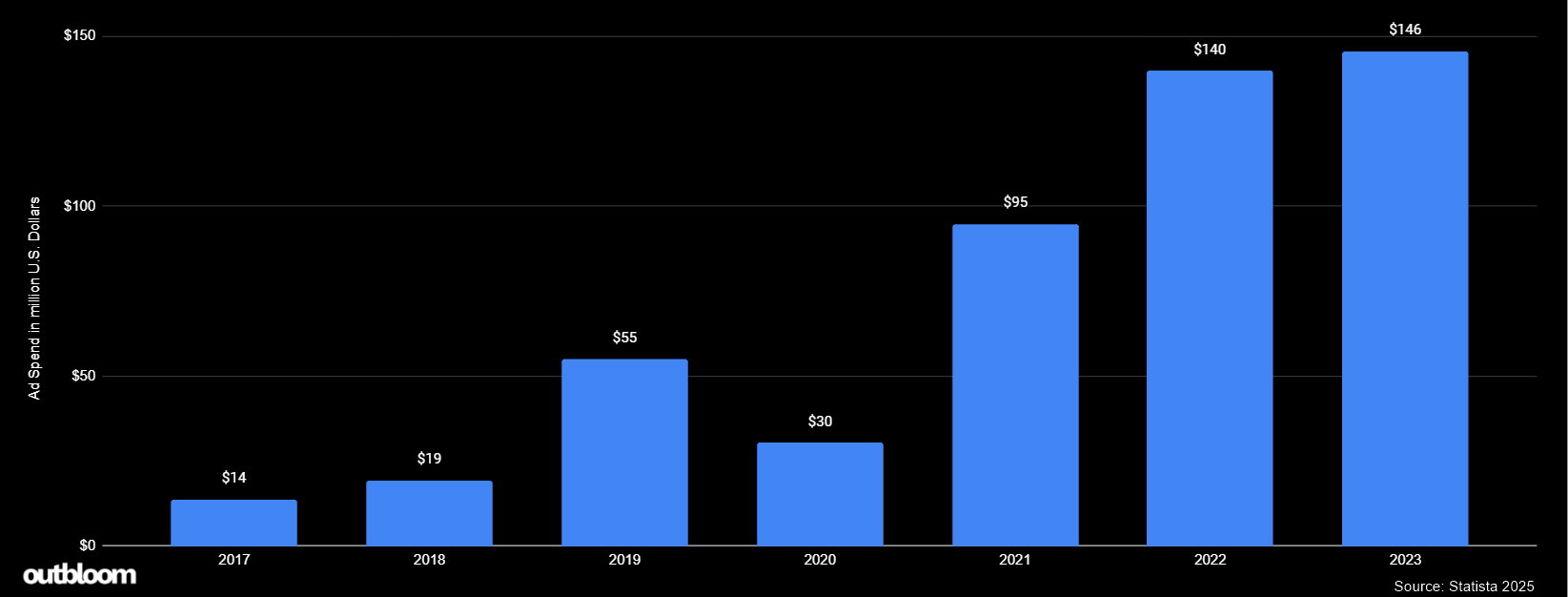
Looking ahead, Pinterest’s advertising business is expected to keep expanding, with forecasts suggesting that ad revenue could hit $5.1 billion by 2027.
This, tied with the increasing number of MAU pose a huge opportunity for advertisers to invest early stand to benefit from lower competition, strong engagement rates, and higher basket values.
As this trend continues, the support network and platform development such as new campaign types, targeting capabilities and new features to help meet expectations of advertisers will continue to improve, further increasing the appeal of this highly effective channel.
TAP INTO UNBRANDED SEARCH
Unlike Google or Amazon, where users often search for specific brands, 96% of searches on Pinterest are unbranded, meaning users are looking for inspiration rather than a particular product or retailer.
This poses a huge opportunity brands looking to introduce themselves to new audiences who are looking for products they sell, however, you must consider one thing across all strategies:
User are there to browse and find inspiration.
Context aside, the chances of a brand pushing live top of funnel ads to new audiences and expecting sales to roll in a week or so later are very slim.
Seamlessly integrating your assets and sponsored content is a must, you want to blend in as much as possible to provide an authentic experience for your prospective audiences.
RISING POPULARITY AMONG GEN Z
At a market level, comparing to other selected social platforms, the total volume of Gen Z users for Pinterest is fifth in line in the US:
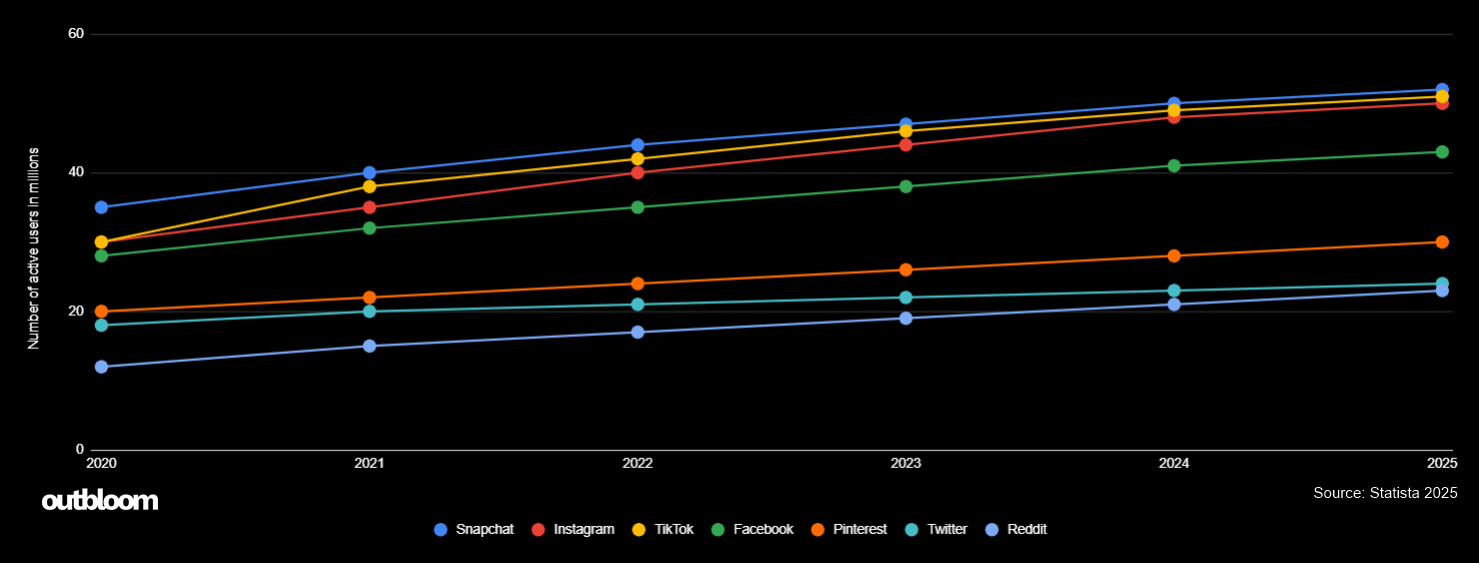
However, looking within, Gen Z users are not only joining the platform in greater numbers but also showing higher engagement levels compared to other age groups.
Pinterest has experienced a significant surge in popularity among Gen Z users over the last 3 years, who now represent over 40% of its global monthly active user base and save nearly 2.5 times more Pins and create 66% more boards than their older counterparts.
So, why is this? A key factor driving this trend is Gen Z’s inclination towards visual discovery and inspiration, which aligns seamlessly with Pinterest’s core offerings.
The platform’s unique blend of search and social media appeals to Gen Z’s desire for personalised, idea-centric exploration.
Additionally, Gen Z users are leveraging Pinterest for shopping purposes, with 63% of weekly Gen Z Pinners reporting that they are “always shopping.”
The term “always shopping” (coined by Pinterest) refers to the reasons why users are on the platform, with the no 1 reason for Gen Z being to “find shopping information” which is music to the ears of advertisers looking to connect with this audience and drive conversions.
HIGH ENGAGEMENT THROUGH SHOPPABLE CONTENT
Shoppable content refers to ads that allows users to directly interact with and purchase products within the content itself.
It transforms static images, videos, or social posts into interactive shopping experiences, reducing the steps between discovery and purchase.
Here’s an example:

Pinterest offers different types of shoppable content that make it super easy for user to find new brands, save items and buy products without even leaving the platform.
As with the example above, the use of lifestyle imagery with tagged products is incredibly effective at blending natural content into feeds to drive high engagement and introduce new brands to consumers.
According to Pinterest’s internal data, Pinners exhibited a 70% higher shopping intent on product Pins tagged within scene or brand images compared to standalone product Pins.
When you pair the high intent with nearly a 30% increase in attributed checkouts when shoppable content is used, the numbers really do speak for themselves.
BUILT FOR USERS TO DISCOVER NEW PRODUCTS
Pinterest stands out vs other paid social platforms as it is built for product discovery.
Compare this to Meta ads for example, users are on the platform for a wealth of reasons (keep up with family, friends, running business pages, etc) of which one may be to find new brands and/or products, but it is very unlikely.
On Pinterest, users are there to discover and over 80% of weekly users report that they’ve found a new brand or product while browsing and a massive 83% of weekly users have made purchases based on content they discovered on Pinterest.
The make up of Pinterest make it both extremely attractive to advertisers but also one that requires strategic thought when compared to channels like Google Ads or Google Shopping.
When you’ve profiled your audience, look at the type of content they are consuming and ask yourself “how do we blend into this?” and “how do we drive consistency?”.
It’s not going to be a case of tapping into the high engagement audiences, introducing your brand and reaping the financial benefits – this will take time, but always remember that users are here to discover and shop (just not in the same way as Google search).
IT’S NOT JUST HOME, RECIPES AND TRAVEL
Pinterest has had this image for many years, a narrative that feeds into the reasons why brands haven’t cut out budget to invest.
But by delving below the surface, brands will be surprised at the categories that are indexing highly and the impressive stats to go along with these.
A category we are heavily involved in is luxury.
According to Pinterest’s latest insights, the luxury audience on the platform has grown by 31% year-on-year and is expanding three times faster than the overall user base.
These luxury shoppers are:
- Affluent – One-third of Pinterest’s monthly luxury shoppers (weekly in the U.S.) earn over $100,000 annually. They are also 35% more likely to reach six-figure earnings than luxury shoppers on other platforms.
- Young – Gen Z now accounts for nearly half of Pinterest’s luxury audience, with a 47% year-on-year increase in engagement.
- Ready to Spend – 53% of Pinterest’s luxury shoppers in the UK, France, and Italy (weekly in the U.S.) have bought a luxury product after discovering it on the platform.
Whether this is luxury fashion, jewellery, make up or fragrance, brands who are not exploring this lucrative platform are missing out and those that are will undoubtedly be benefiting as early adopters.
PROVEN TO DELIVER RESULTS
A quick browse through Pinterest resources provides numerous case studies showcasing success across various verticals.
At outbloom, we have managed media on this network for many clients and delivered award-winning work across home, luxury, garden, and more.
To provide insight into the results this platform can deliver compared to Meta (and Instagram), let’s consider one of our luxury fashion clients who’s goal is to acquire new customer sales (UK only).
Over a one month period in November 2024 we ran like for like creative across the two networks with the same media spend and largely the same audience (interest targeting):
- Click Through Rate (CTR)
- Pinterest: 3.81%
- Meta (and IG): 4.21%
- Average Cost per Click (Avg. CPC)
- Pinterest: £1.22
- Meta (and IG): £1.08
- Conversion Rate (CVR) (7/7/1 Pinterest, 7DC 1 DV Meta)
- Pinterest: 10.17%
- Meta (and IG): 2.43%
- Return on Ad Spend (ROAS) (7/7/1 Pinterest, 7DC 1 DV Meta)
- Pinterest: 34.3
- Meta (and IG): 16.89
A trend we see across most clients is that our CPC’s are slightly higher for Pinterest and CTR lower (all context dependent), however, CVR and ROAS consistently outperforms Meta when running comparable tests.
SO, ARE PINTEREST ADS WORTH IT?
Context dependent, but if you have budget and a clear vision of what you want to achieve through your paid social advertising, then yes.
MAU and ad revenues are growing exponentially year over year and thousands of brands are driving performance including the likes of Louis Vuitton, Guerlain and YSL, brands who advertisers may not have expected to see on this platform.
The period of being an early adopter is fading away, however, the competitive landscape is much less hectic than Meta and IG, and putting off that test isn’t going to wash this year as you’ll fall behind your competitors who are most likely cutting out more budget for Pinterest right now.
